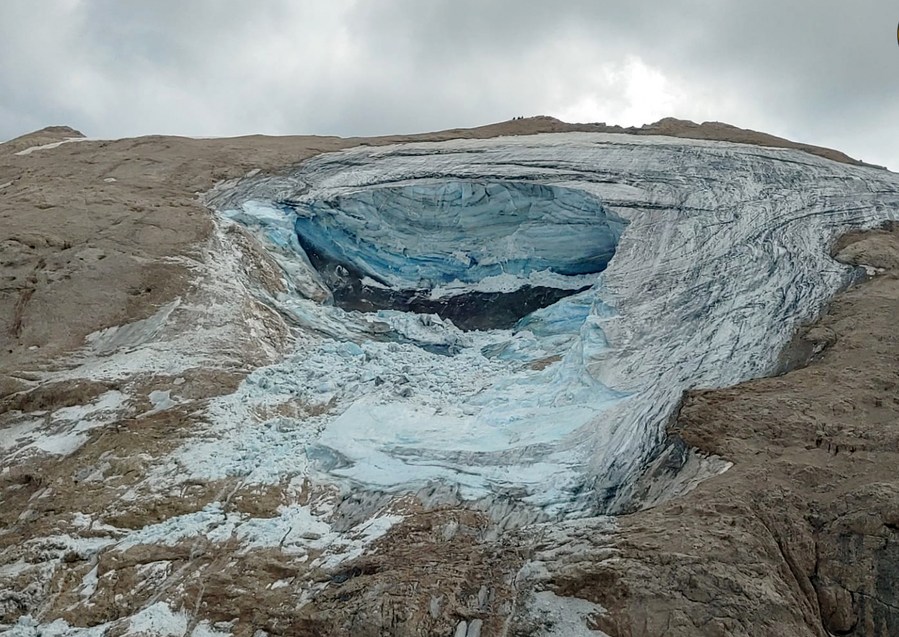Many of the glaciers located within the 50 World heritage sites may melt away by 2050 due to global warming, according to a report by UNESCO published on November 3.

Photo provided by Italy's Alpine Rescue on July 3, 2022 shows a general view of Marmolada Glacier in northern Italy. (Italy's Alpine Rescue/Handout via Xinhua)
A new study conducted by UNESCO in collaboration with the International Union for Conservation of Nature (IUCN) shows that the melting of these glaciers has been accelerating since 2000. The glaciers melt an average of 58 billion tons of ice per year, equivalent to the annual water use of France and Spain, which contributes to 5 percent of the rise of global sea level, the author of the report, Tales Carvalho, said.
The total area of glaciers being monitored is 66,000 square kilometers, accounting for 10 percent of the Earth's total glacier area, and can represent the situation of the whole world, and the rate of global glacier melting is expected to increase significantly between 2000 and 2020, he added.
UNESCO postulates that even if global warming trends ease over the next three decades, over half of the glaciers would have disappeared by 2100 if the current carbon emission trend continues.
Half of the world's population relies on glaciers as a source of water for domestic use, agriculture and power generation. Glaciers are also the backbone of biodiversity, nourishing numerous ecosystems. When glaciers melt rapidly, not only will millions of people suffer from natural disasters such as water shortages and flooding, but also destroy ecosystems by causing coastal erosion and even tsunamis, IUCN Director General Oberle said.
"This study underscores the urgent need to reduce greenhouse gas emissions and invest in nature-based solutions, initiatives that can mitigate climate change and enable people to better adapt to its impacts," he said.
UNESCO emphasized that the measures of avoiding glaciers melting is to reduce carbon emissions. If the global average temperature increase is within 1.5 degrees Celsius, the remaining two-thirds of the glaciers in the World Heritage Reserve will be saved.


